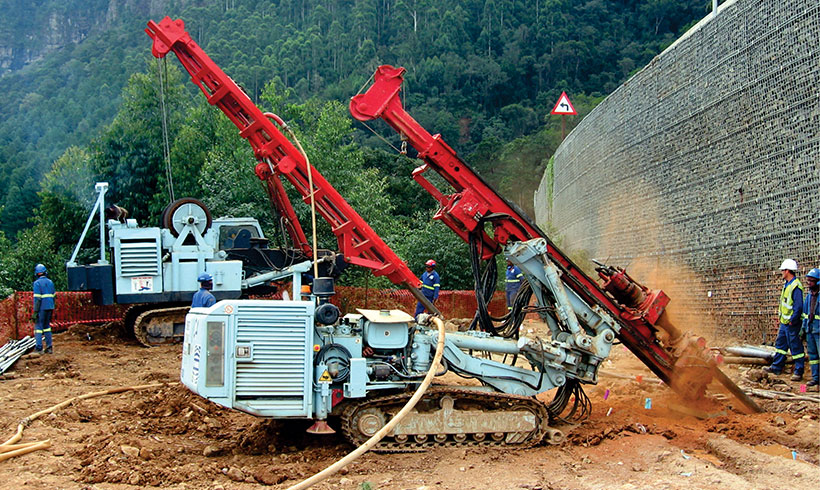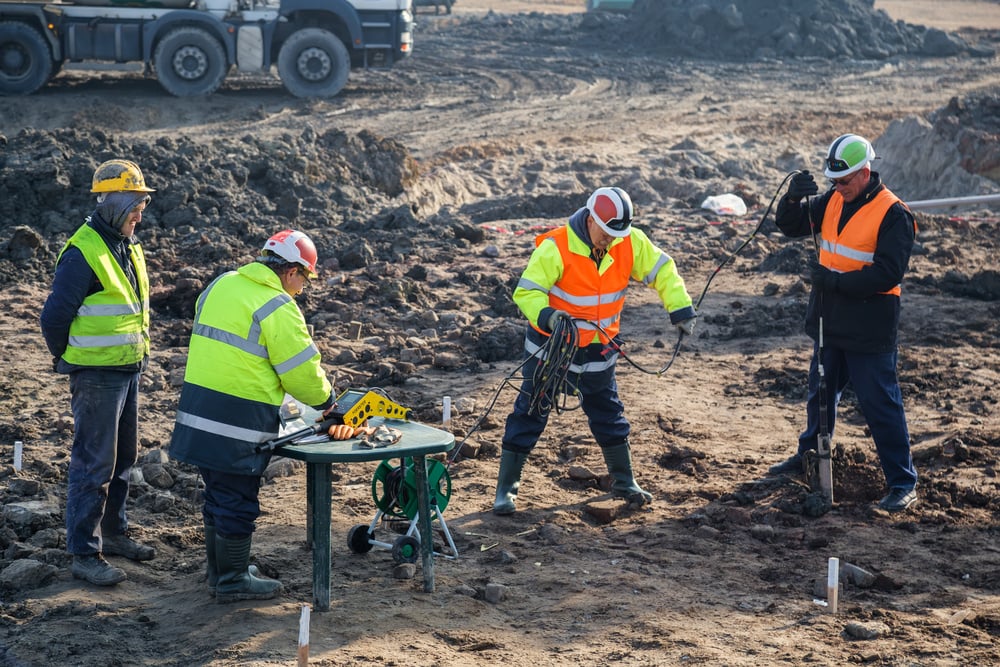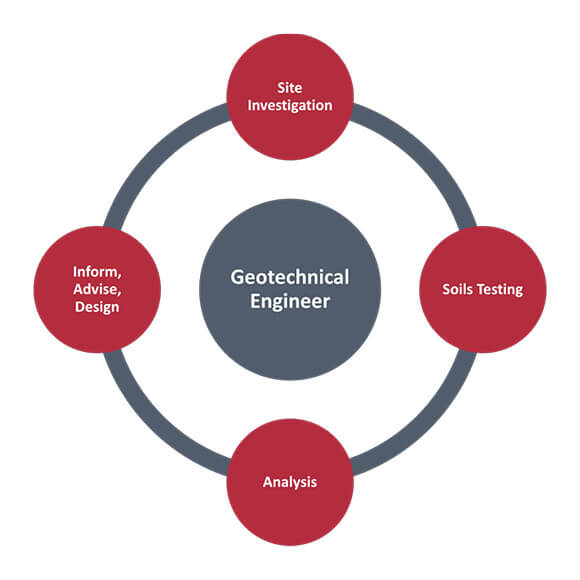Geotechnical Engineering For Construction Projects Fundamentals Explained
Geotechnical Engineering For Construction Projects Fundamentals Explained
Blog Article
9 Easy Facts About Geotechnical Engineering For Construction Projects Described
Table of ContentsRumored Buzz on Geotechnical Engineering For Construction ProjectsThings about Geotechnical Engineering For Construction ProjectsThe Buzz on Geotechnical Engineering For Construction ProjectsGeotechnical Engineering For Construction Projects - An OverviewThe Ultimate Guide To Geotechnical Engineering For Construction ProjectsThe 5-Minute Rule for Geotechnical Engineering For Construction ProjectsThe Buzz on Geotechnical Engineering For Construction Projects
Principles and Technique of Ground Improvement. Ground Improvement Concepts And Applications In Asia. Style analysis in rock technicians.Cengage Knowing, Stamford, 666 p. Atkinson, J., 2007. The mechanics of dirts and structures. The Observational Approach in ground engineering concepts and applications.
The Definitive Guide for Geotechnical Engineering For Construction Projects
Lab and area screening plays a crucial function in this process. By removing examples from the planet's subsurface and applying a suite of tests, geotechnical designers can anticipate the behavior of dirt layers and review their suitability for various building and construction endeavours. The essence of geotechnical design in civil engineering can not be overemphasized, attributable to several elements: The preliminary step in any kind of geotechnical study involves determining the dirt type at the construction site.
Comprehending these characteristics ensures that just ideal soil kinds are selected for the development, thus averting possible architectural failings. The structure works as the bedrock of any type of building project. Choosing the proper structure kind is a decision that depends upon the extensive evaluation given by geotechnical design. This makes sure the longevity and stability of frameworks by fitting the lots they will bear.

Geotechnical site investigation is a critical action in the planning and execution of any building job. It entails the collection and analysis of information connected to the physical residential or commercial properties of soil and rock beneath a proposed construction website. This information is important for the style and construction of safe, stable, and sustainable structures.
The smart Trick of Geotechnical Engineering For Construction Projects That Nobody is Discussing
, additionally known as subsurface exploration, entails a collection of tasks aimed at figuring out the soil, rock, and groundwater problems at a building site. The primary purposes are to recognize possible geotechnical threats, assess the design buildings of subsurface products, and offer recommendations for the style and building and construction of foundations, retaining wall surfaces, and various other structures.
The workdesk research study assists in identifying prospective geotechnical problems and preparing the subsequent fieldwork. This entails observing the topography, drainage patterns, existing structures, plant life, and any signs of instability or disintegration.
The 9-Second Trick For Geotechnical Engineering For Construction Projects
Superficial test pits are excavated to directly observe and example the soil and rock. This technique works for researching the upper layers of the subsurface and identifying near-surface risks. Non-invasive geophysical techniques, such as seismic refraction, ground-penetrating radar (GPR), and electrical resistivity tomography (ERT), are used to map subsurface problems and discover anomalies.
Soil and rock samples accumulated during the area investigation are subjected to laboratory testing to determine their physical and mechanical buildings. These tests provide vital information for geotechnical evaluation and design.
The primary benefit of geotechnical site examination is making certain the safety and security of structures. By understanding the subsurface conditions, engineers can create foundations and other architectural aspects that can hold up against the lots and environmental pressures they will certainly go through. This decreases the danger of negotiation, decrease, and structural failing.
The Main Principles Of Geotechnical Engineering For Construction Projects
Comprehending soil features can assist the selection of read the full info here excavation strategies, dewatering techniques, and ground improvement procedures. This guarantees efficient and secure building and construction methods. Geotechnical website investigations are frequently check my source called for by developing codes and regulations. Abiding by these demands makes certain conformity with legal and security standards, preventing potential lawful responsibilities and job hold-ups.
This details is indispensable for project supervisors, designers, and professionals in establishing realistic routines, spending plans, and contingency plans. Geotechnical Engineering for Construction Projects. Skyscraper in a Coastal AreaIn a coastal city, a skyscraper residential structure was planned on a site with presumed loosened sand deposits and a high water table. A detailed geotechnical investigation, including borehole exploration, CPT, and geophysical studies, was performed
Getting The Geotechnical Engineering For Construction Projects To Work
Based upon these findings, the foundation design was modified to consist of deep heap structures expanding right into stable strata, and ground enhancement techniques, such as vibro-compaction, were executed to reduce liquefaction threats. This aggressive technique made sure the security and stability of the building while staying clear of pricey post-construction removal. Facilities Development on a Sloping TerrainA major facilities job, involving the construction of a freeway and bridges, was intended on a sloping surface with steep inclines.

The Leaning Tower of Pisa (Italy), a renowned building wonder, is infamous for its unintended tilt from significant geotechnical concerns. The tower's foundation was improperly developed to deal with the soft, unpredictable dirt beneath it, leading to irregular settlement and its distinctive lean. Our globe is populated with outstanding infrastructure projectsfrom looming skyscrapers to stretching bridgesall standing testimony to the evolution of the different construction devices and methods offered.
Geotechnical design is a specific area within civil engineering that concentrates on examining the behavior of planet products. This branch digs deep right into the groundinvestigating exactly how the dirt, rock, and groundwater at a building website can influenceand be influenced bythe framework that we put up on and into them. Prior to a single brick is laid or a concrete structure poured, geotechnical engineers probe into the earthgathering essential data concerning the site's article dirt make-up, rock structure, and groundwater levels.
Our Geotechnical Engineering For Construction Projects Diaries

is a device used to examine the honesty and load-bearing capacity of stacks during installation, leveraging the principle of wave proliferation. It maximizes construction effectiveness by offering real-time analyses, thus ensuring safe and efficient stack structures. One of the useful applications of geotechnical engineering includes making a decision and carrying out the ideal approaches for structure construction.
Pile driving represents more than the plain act of putting architectural components right into the ground. On the contrary, it is a thoroughly managed process of transferring a structure's load past the less secure soil layers more detailed to the surfacedown to the extra significant strata that lie beneath. When it comes to stack driving, consider just how geotechnical engineers expertly use this strategy to equally distribute the framework's weight.
Report this page